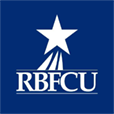Home Equity Loans and HELOCs: What’s the Difference?
As a homeowner, it’s great to see your monthly mortgage payments inch closer to the end of the amortization schedule. But you don’t have to wait until you reach a zero balance to get excited.

That’s because with each mortgage payment you make, you’re building something that can be golden: Home equity. It's defined, in part, as the amount of your home that you actually own. Your ownership is built through monthly payments combined with the appreciation of the assessed value of the property. A quick way to calculate equity is to take the home's assessed value, multiply by 80 percent, then subtract any liens or loans against the property.
Credit unions like RBFCU offer two ways to leverage home equity into a loan to use for a number of purposes. These are home equity lines of credit (HELOC) and home equity loans.
There’s a good chance you'll find a loan with a lower interest rate than what the credit card company is charging you.
A HELOC and a home equity loan sound the same, but there are differences. They look like the chart below.
If you are thinking of tax benefits from these loans, be careful. The IRS has advised taxpayers that interest on a home equity loan, HELOC or second mortgage cannot be deducted in every case. Interest from these loans are typically deductible when the funds are applied to building an addition to an existing home. Interest on the same loan when used to pay personal living expenses, such as credit cards, is not. It is recommended to speak with a CPA or tax professional when tax laws are considered for home equity loans or HELOCs.

.jpg?sfvrsn=23ceb5a8_1)

